
Ryoan-ji
The rock garden (kare san sui) of Ryoan-ji is the most famous Zen Garden in the world. No other rock garden radiates so much peace and harmony. Visitors sit on the wooden terrace and look at the rectangular area of 30x15 m. The white stones are drawn with the rake in tracks, only 5 islands of moss and stone interrupt the strict order. The governor Hosokawa Katsumoto died in 1473 during the Onin war and decreed that a Zen temple should be built on his property. The Ryoan-ji Temple was built by the nearby monastery of Myoshin-ji under the direction of Abbot Giten.
The Ryoan-ji belongs to the Rinzai school. The Rinzai school practices zazen (sitting meditation), it is also famous for gardening and martial arts. The buildings of Ryoan-ji burned down in 1790, only the rock garden created by So-ami around 1500 survived. The new buildings were aligned to the rock garden, which thus gained in importance by the fire. The rock garden is bordered to the south and west by a wall of oil and clay, which was originally covered with a thatched roof. Behind the wall you could see the mountain range of Higashiyama. This "borrowed landscape" is now hidden by tall trees. The meaning of the rock garden is unknown. But there are different interpretations. 1. The 15 stones make up 5 islands in the sea, 2. There are 5 mountain peaks that break through the clouds, 3. A tiger crosses a river with their young, 4. The islands represent the Zen monasteries of the 5 mountains. Most likely, none of the interpretations is right or wrong. Knock on the sky and listen to the sound.
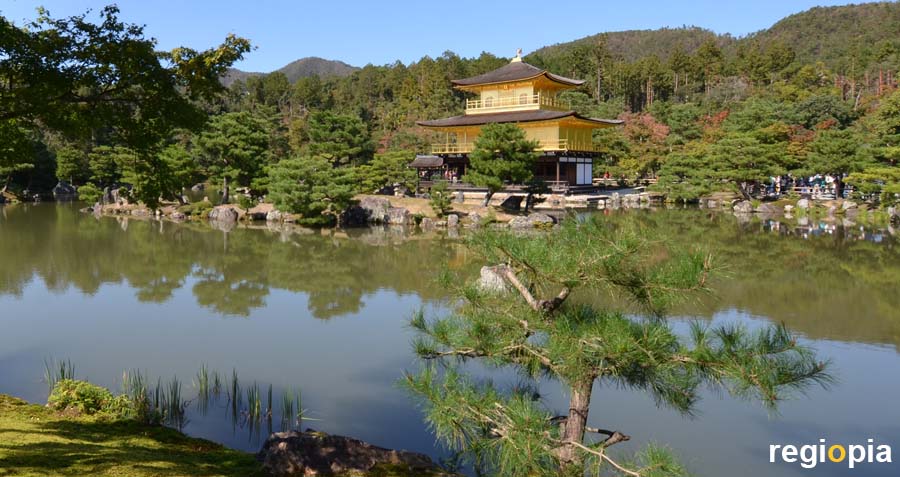
Golden Pavilion Temple Kinkaku-ji
Actually the temple is called Rokuon-ji (Deer Garden Temple), but it is better known under the name Kinkaku-ji "Golden Pavilion Temple". The Golden Pavilion was built in 1397 by Shogun Yoshimitsu, who united Japan and retired in 1394. He bought the Kitayama Palace and built his residence on the site. After the death of Ashikaga Yoshimitsu in 1408, the residence was transferred to the Rinzai Zen sect.
The "Golden Pavilion" is the hall containing the Buddhist relics of the Zen Temple, whose two upper floors are gilded with gold leaf. The basement floor has been built in the elegant style of palace architecture, with dark wooden structures and white infills. On the ground floor is the Amida Buddha, the highest sanctuary of the temple. Amida means "boundless light" and stands for compassion and wisdom. The first floor houses the Bodhisattva Kannon also known as Gunayin. The Goddess of Compassion is often portrayed with many helping arms. The second floor is smaller and has rounded lintels, here are more Bodhisattva representations. On top of the roof sits a Feng Huang. In Chinese mythology, the bird is a symbol of luck and a sign of mercy.
The property is now part of the Zen Temple Shokoku -ji, which also includes the "Silver Pavilion". The "Golden Pavilion" stands on a platform in the lake and is surrounded on three sides by water. According to Buddhist teachings, the temples should fit into the landscape and clarify the harmony between man and nature. In 1950, the pavilion was destroyed by arson. The Golden Pavilion survived even the Onin Civil War in the 15th century unscathed. The 1955 "Golden Pavilion" was rebuilt. The Kinkaku-ji is the most famous sight of Kyoto and next to the Fuji San one of the landmarks of Japan.
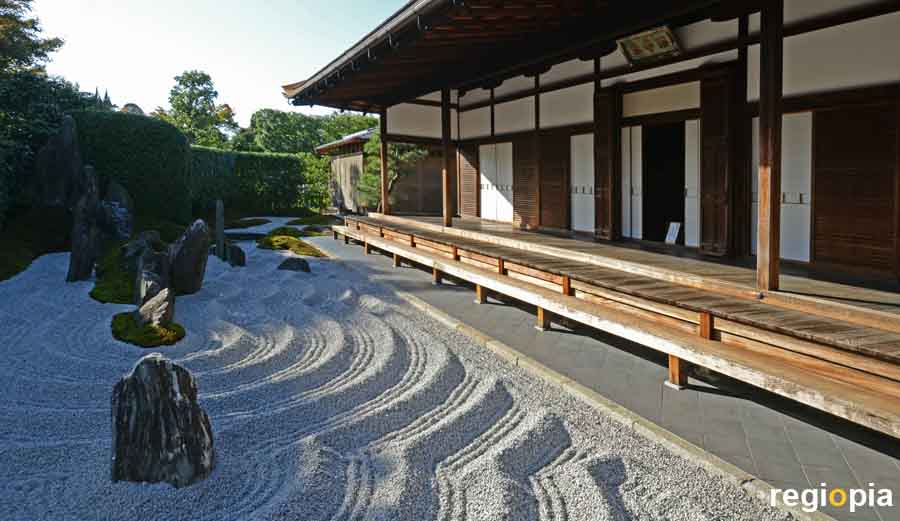
Daitoku-ji
The Daitoku-ji is one of the largest and most important Buddhist temples in Japan. The Daitoku-ji consists of various smaller temples and large, central structures. These are built in a row on the north-south axis. The Daitoku-ji is a Zen Buddhist temple of the Rinzai school. The temple district was established in 1315 under the direction of Daito Kokushi. The name Daitoku-ji means "Temple of Great Virtue".
The Daitoku-ji is famous for the Daisen-in, which is located in the northern part of the complex. The Daisen-in was the home of the Zen master Daisho, who designed this building in 1509. The Daisen-in is a National Heritage Site because it set new standards in architecture, horticulture and painting. In addition, the daisen-in is considered to be the origin of the Japanese tea ceremony, because Rikyu-Koji cultivated tea drinking here, who is considered the father of the tea ceremony. The best known attraction of the structure is the Kare-Sansui rock garden. It consists of 4 areas that are distributed around the Daisen-in. The individual gardens are called "Mountains and Waterfalls", the "River", the "Middle Sea" and the "Ocean". In these landscapes, inspired by ink drawings, every stone has a meaning. These are explained in the brochure that can be bought on site. The paintings on the sliding doors are partly by Motonobu Kano, who is considered the greatest artist of the Muromachi period (1333-1568).
Since you are unfortunately not allowed to take pictures in the Daisen-in, the photo shows the Zuiho-in. The former home of Zen master Mirei Shigemori was built in 1961 and is also located on the Daitoku-ji site.
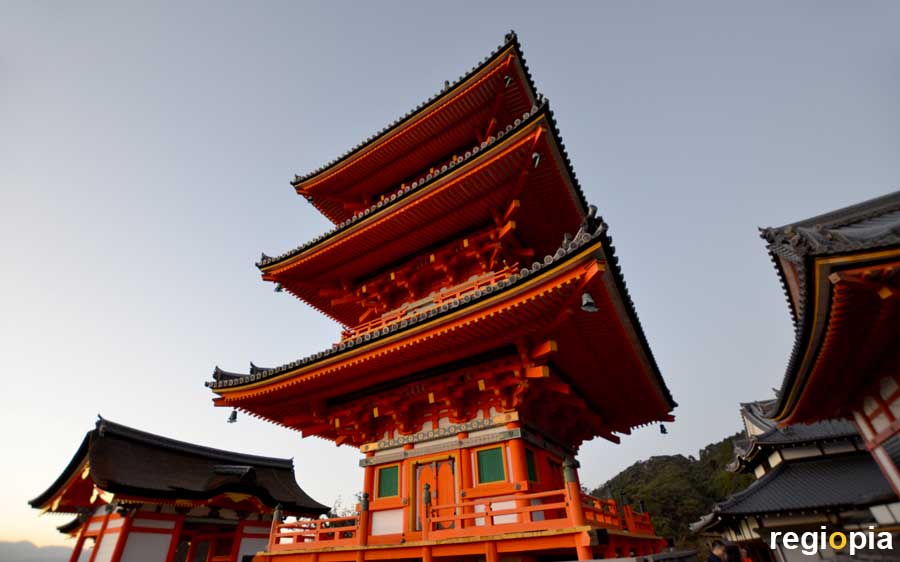
Kiyomizu-dera
The temple complex of Kiyomizu-dera is one of the most beautiful in Kyoto. From the wooden terrace built over a stream, you will enjoy the best view on Kyoto. The Buddhist temple was founded in 798. The current buildings were mainly built around 1630, since the Kiyomizu-dera was destroyed in 1629 by a fire. Kiyomizu means Pure Water because, according to a legend, the temple was built where Kannon (Bodhisattva of Compassion) sat for 200 years and prayed until a young monk named Enchin came by and Kannon told him to take his place. The owner of the land Tamuramaro met the monk on a deer hunt. Enchin told him about his encounter with Kannon and told Tamuramaro that he should not shoot deer at this holy place. The deer blood was to help his wife with the birth. But Tamuramaro renounced the hunt and gave this land for the temple. Since then, the water of the creek over which the temple stands is considered to be sacred, and prayers in the Kiyomizu-dera are supposed to make for an uncomplicated birth. The Taizan-ji temple is the place to pray for an uncomlicated birth, it is located south of the wooden terrace. Pass the fountain with the holy water and follows the path parallel to the slope. In front of the Taizan-ji (Simple Birth Temple) stands a small red pagoda. The Kiyomizu-dera is famous for its main hall "Hon-do" with the large wooden terrace. In the "Hon-do" is the temple's biggest shrine, an eleven-headed Kannon statue with many arms, shown only every 33 years. The "Kiyomizu-dera" is one of the top attractions of Kyoto and is accordingly overrun by tourists and believers. Nevertheless, the Kiyomizu-dera is a must see on every trip to Japan.
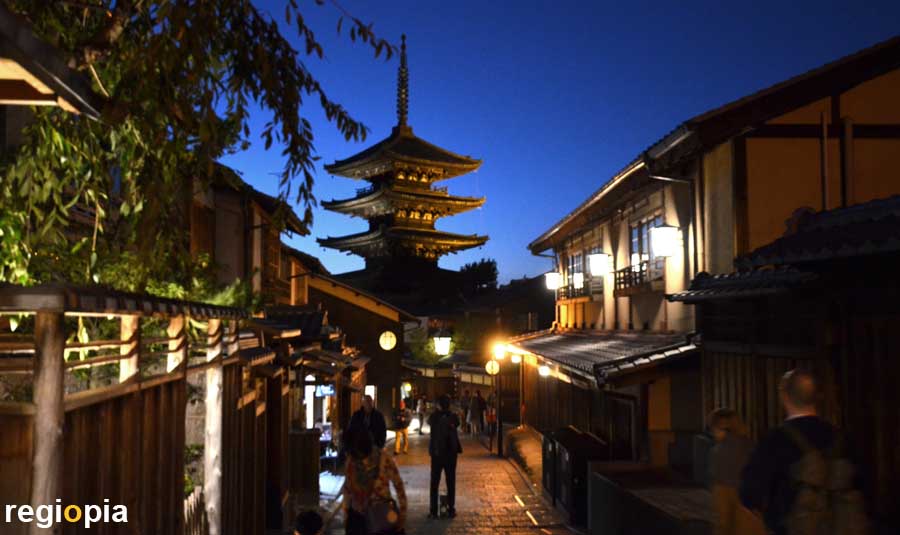
Yasaka Pagoda
The five-storey pagoda of the "Hokanji Temple" is 49 m high, making it the third-largest wooden building in the city. The pagoda was built around 1440, after its predecessor was distroyed by a fire. The "Yasaka Temple" (Hokanji) is located about 500 m to the north of the Pagoda at Shijo-Dori Street.
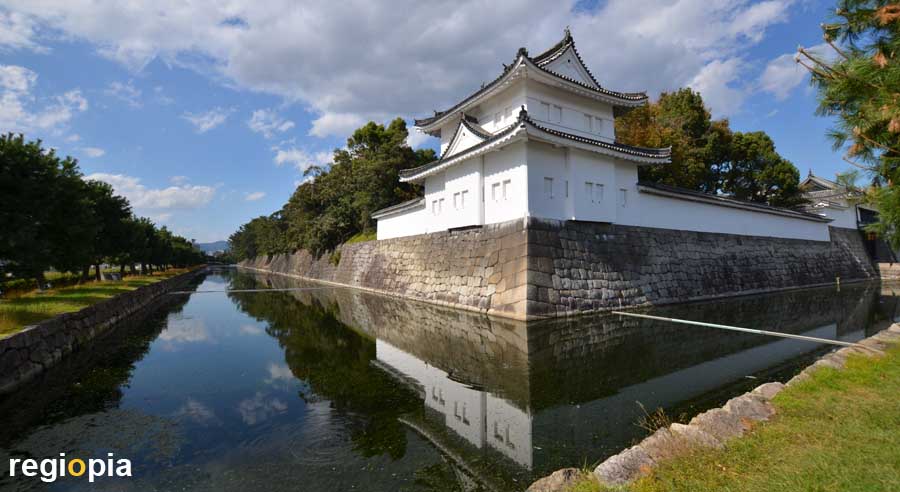
Nijo Castle
The castle of Shogun Tokugawa Ieyasu was built around 1600. Ieyasu was headquartered in Edo (Tokyo) and built Nijo Castle in Kyoto almost exclusively as a show of force. The shogun used the castle only when he was visiting Kyoto. Ieyasu deposed the Emperor and made Edo the center of Japan. He therefore had many enemies in Kyoto and needed a fortress with moat. Nijo-jo consists of two different parts. There is the Ninomaru residence, which is like the Katsura Villa a lake-facing housing estate protected by a moat and a fortress with a second moat and high walls as a refuge. The Ninomaru residence is famous for its numerous paintings by the Kano School and the magnificent carvings on the buildings. Here is also the "Nightingale Hall", a wooden walkway where the planks were laid so that a chirping sound is created when walking over the floor. The sound should warn the shogun of Ninja assassins.
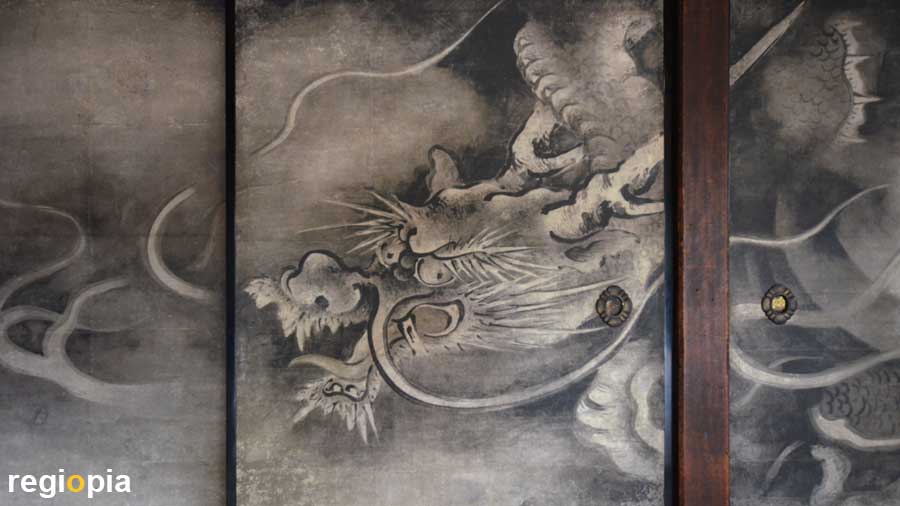
Kennin-ji
The Kennin-ji Temple is located in the Higashiyama district and is one of the top attractions in Kyoto. Kennin-ji is the oldest Zen temple in central Kyoto, founded in 1202 by Minamoto no Yoriie. The first Abbot of Kennin-ji was Myoan Yosai (Eisai), who trained as a Chan teacher in China and then founded the Shofuku-ji Temple in Fukuoka (Hakata). There he established Japan's first Zen school in 1195. In Kyoto he also taught Zen Buddhism and traditional Tendai Buddhism. The Kennin-ji developed into one of the leading Zen temples in the country. Today the temple belongs to the Rinzai sect.
Many of the original buildings were destroyed in the Onin Wars, so most of the buildings date from the 16th and 17th centuries.
The most famous attraction in Kennin-ji is the ceiling painting "Two Dragons" by Koizumi Junsaku, which was installed in 2002 in the Hondo (lecture hall) to mark the 800th anniversary of Kennin-ji. The dragon is a symbol of Zen Buddhists and there are more dragons than Buddhas in some temples.
The Kennin-ji is also famous for its garden art. White gravel surfaces with rocks and trees on moss islands are among the best of their kind in Japan. The Zen garden "Circle - Triangle - Square", which is located between two buildings near the entrance, is very famous.
Another attraction of the Kennin-ji is the picture "Fujin and Raijin" by Tawaraya Sotatsu. Fujin and Raijin are the two Shinto gods for thunderstorms and wind, which were painted on a gold background on folding walls.
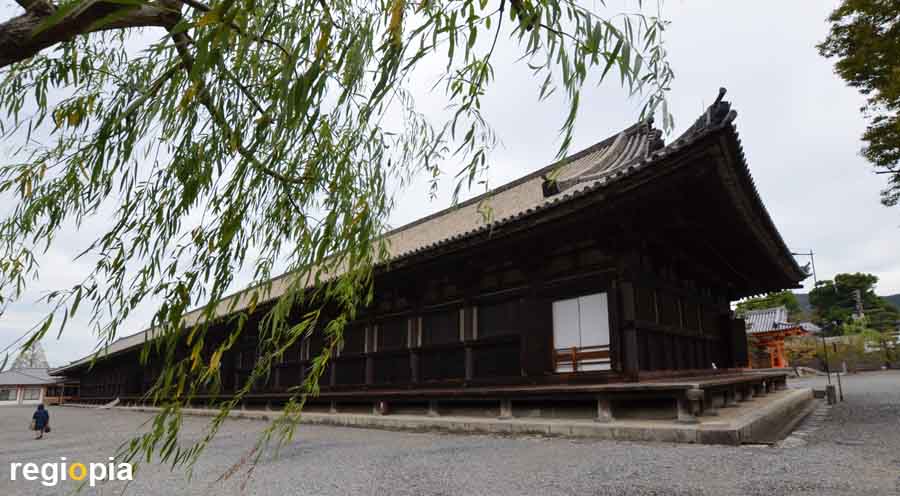
Sanjusangen-do
The outside of the Sanjusangen-do is unspectacular, the long hall made of dark wood looks like a storage shed. The special feature are the 1,000 Kannon sculptures in the interior, which stand like on a grandstand. You walk past the life-size wooden statues that have been painted with gold paint. In front of the Bodhisattvas are 33 protective gods from Indian folk belief, which were adopted from Buddhism. In the middle of the hall is a large, seated figure of Kannon Bodhisattva in meditation posture with 40 arms holding Budhist symbols. As a visitor you are overwhelmed by the number of artistically crafted figures and the devout calm in the great hall.
Rengeo-in (Sanjusangen-do) Temple was commissioned by Emperor Goshirakawa in 1164 to pacify the country through Buddhism. The temple was then on the grounds of the imperial palace. When the temple was destroyed by fire in 1249, Emperor Gosaga had it rebuilt in 1266.
The unofficial name Sanjusangen-do refers to the 33 yokes of the great hall. A yoke is the area that lies between two supports. San Ju San means 33. According to Buddhist belief, the Bodhisattva Kannon can remove all misfortunes in the world with his 1,000 helping hands. Kannon can transform himself into 33 shapes and thus save the world.
The Sanjusangen-do is located south of the National Museum of Kyoto, in the district of Higashiyama. Photography is prohibited inside the building.
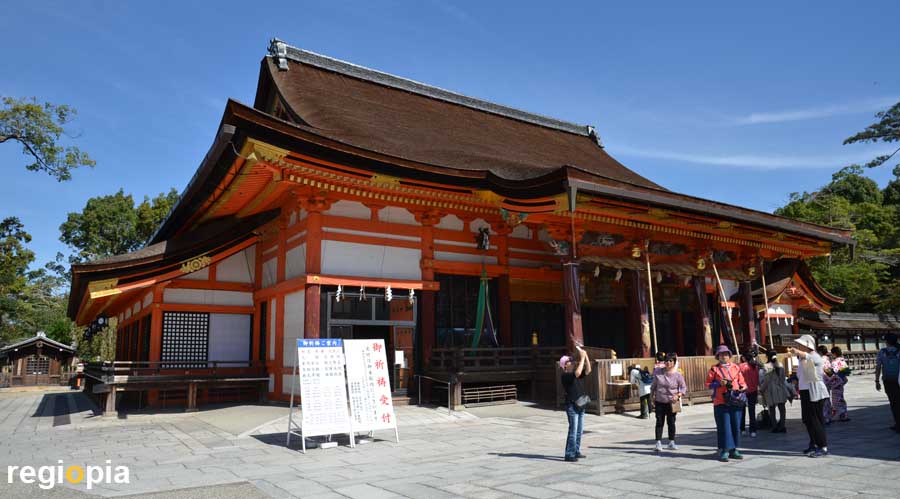
Yasaka Schrein
The Yasaka Shrine is located in the Gion district, on a hill at the end of the main street Shijo-dori. Therefore it is also known under the name Gion Shrine. You enter the temple precinct through the Nishiromon Gate, in front of which there are notable guardian figures. You follow the path up and come to a plateau on which the Yasaka shrine stands. The main hall is a wooden structure with reddish supports and white wall surfaces. Believers can ring bells from outside and pray for their wishes. In the middle of the square is a pavilion with hundreds of paper lamps. The Yasaka Shrine was built in 656 for the Gozu-Tenno, a deity worshiped to ward off contagious diseases.
The Yasaka Shrine is a Shinto temple, the Japanese folk religion. It is visited by many people, especially at the New Year and the Cherry Blossom Festival. Behind the Yasaka Shrine is a cherry orchard in Maruyama Park. It is also very popular among Chinese tourists who take selfies dressed in rented kimonos.
625 Gionmachi Kitagawa, Higashiyama Ward
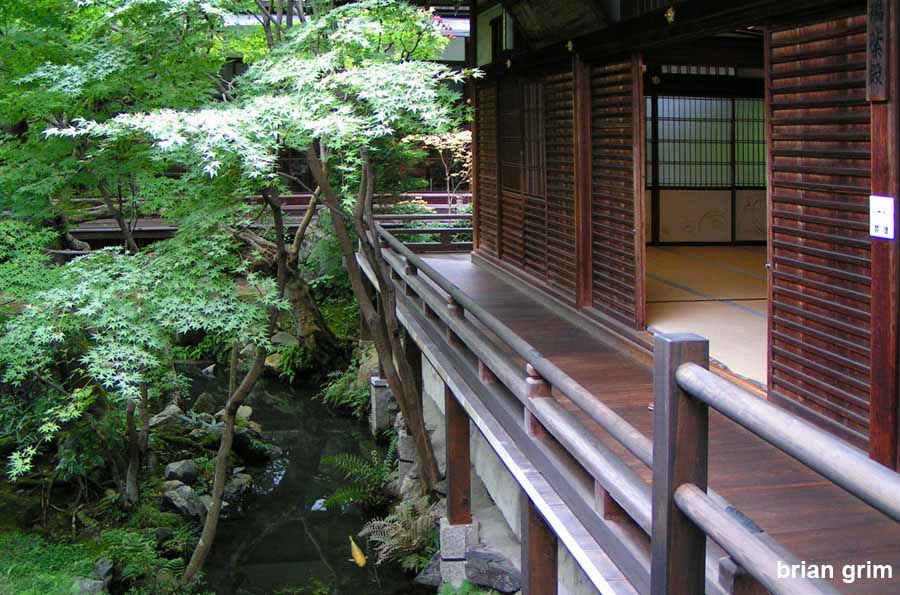
Eikando
The Eikando Temple nestles on the wooded hill Daimonji-yama. The Eikando is one of the most famous Zen temples in Japan, it is the main temple of the Seizan sect, which belongs to the Jodo school. The "Eikando Zenrin-ji" was founded in 853 by the monk Shinsho, a disciple of Kukai. The Eikando is famous for an Amida Buddha statue that looks over its shoulder not like others straightforward. The temple is special, because the buildings are located at different heights and are connected by bridges. The landscape of the Eikando Zenrin-ji with its gardens and a pond has much to offer. In autumn it is very beautiful here because of the leaf coloring.
ads
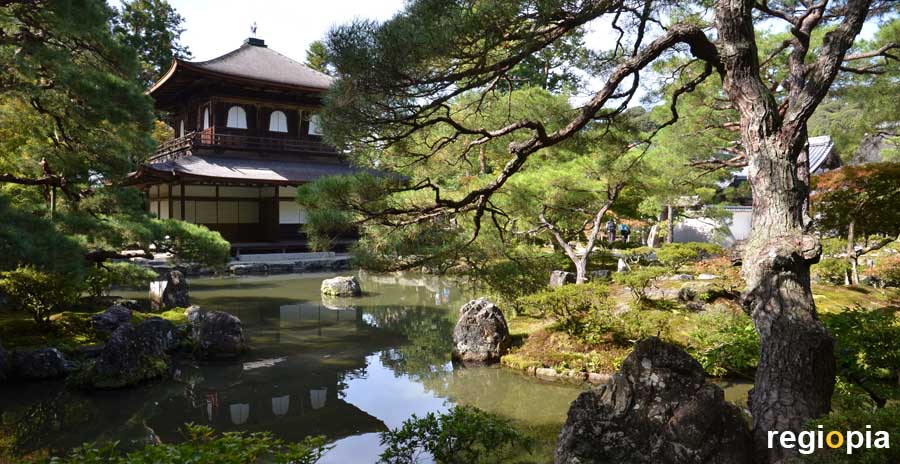
Silver Pavilion
The Jisho-ji is better known under the name Ginkaku-ji (Silver Pavilion). The temple was built in 1482 for the shogun Ashikaga Yoshimasa. The Silver Pavilion was designed after the model of the Golden Pavilion Kinkaku-ji, but it has one floor less. The "Silver Pavilion" is a hall for the Bodhisattva Kannon and is actually called Kannon-den. In addition to the "Silver Pavilion" there are other buildings in Jisho-ji, the most famous is the Togu-do from the 15th century.
The garden of the Silver Pavilion is one of the most beautiful gardens of Kyoto. The temple complex was built in the wooded hillside of Higashi Mountain, the Silver Pavilion is located on a small lake with a beautifully landscaped shoreline. Exceptionally large is the rock garden, made of white gravel. White sand was once used to mark a sacred place or purify a place spiritually. Here, the white sand was poured into a tall cone reminiscent of the Fujiyama. This cone is called Kogetsudai "platform to look at the moon". Since Japanese gardens are often modeled on landscape paintings, the white sand also serves to increase the contrast to dark areas, just like in an ink drawing. This effect becomes visible as you climb up the slope and look out onto the garden from above. The Jisho-ji is located on the slope of Higashiyama, the Shogun Yoshimasa employed many artists and the place became a term in Japanese art history. The artists influenced each other and shaped an entire epoch, which is still called Higashiyama culture.
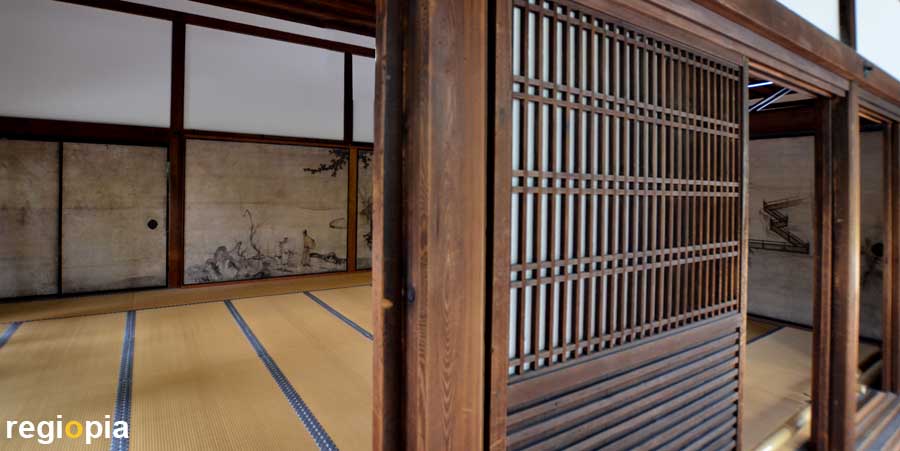
Katsura Villa
The imperial Villa Katsura is a group of buildings in a beautiful garden. The name "Katsura" comes from the river Katsura that flows next to the property. The Katsura Villa was created when the power changed from Kyoto to Edo (Tokyo). The shogun Tokugawa Ieyasu conquered power through military victories. He moved the administration to Edo, but left the emperor in the capital of Kyoto. The emperor was allowed to build a splendid new residence as compensation to the loss of power. Katsura was the "Golden Cage" for the disempowered emperor. "The Remote Palace" Katsura no rikyu was built in 1620 on an estate of the Fujiwara family of Prince Toshihito. His son Toshitada continued to build new houses until 1642. The garden was designed by Kobori Masakazu called "Enshu", the most famous garden architect of the time. Katsura is a prime example of Japanese garden art and architecture. As with the Zen temples, the garden and buildings become a harmonious unity. The imperial villa was built in Shoin style. "Shoin" is the study room around which all other rooms were created. From the study room you can look into the garden, through sliding walls (fusuma) you can enlarge or reduce the space. The villa consists of three Shoin rooms, one behind the other, facing the lake. The buildings are planned on a grid of tatami mats and stand on thin wooden supports above the ground. The simple, clear forms that do without ornaments are style-defining for Japanese design. Pioneers of modern architecture such as Walter Gropius and Bruno Taut visited the Katsura Villa and recognized many parallels to modern architecture.
The "Katsura Villa" belongs to the administration of The Imperial Household Agency Kunaicho. The imperial facilities can be visited only by appointment on the website (see link) of Kunaicho. The dates are booked out quickly, so you should book about 3 months in advance.
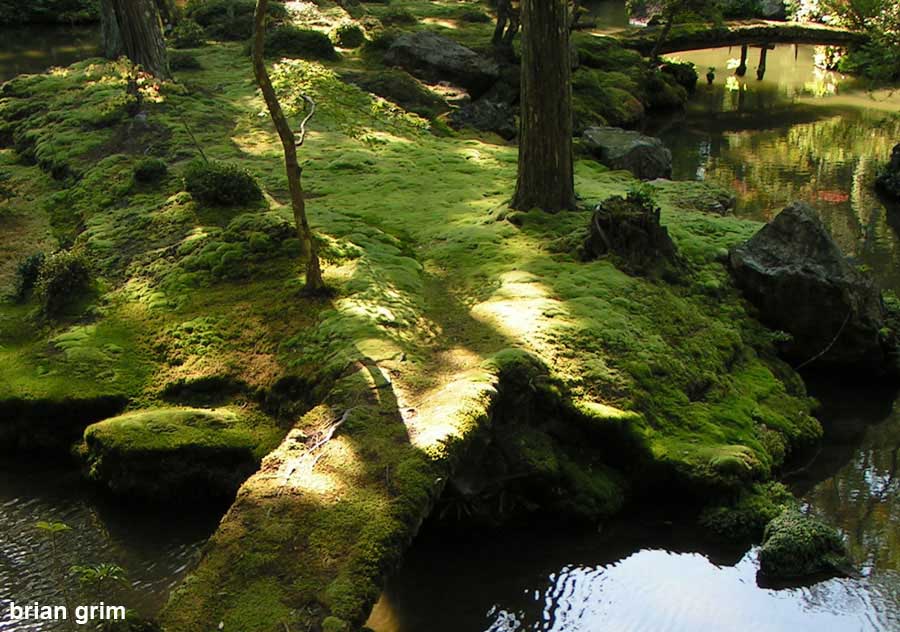
Saiho-ji / Moss-Temple
The Saiho-ji is also called Koke-dera Moss Temple because it is famous for its moss garden. All the ground surfaces are overgrown by moss, which makes the garden unique even in Kyoto. The Saiho-ji is a Zen temple with various areas, in addition to the all over Japan famous Moss Garden, there is also a stone garden. The Saiho-ji was built in 1339 by the Zen monk Muso Soseki on an existing temples from the 8th century. However, the Saiho-ji was destroyed in the Onin War around 1470 and was then for a long time a ruin. The temple complex was later reconstructed after the old models, but it is still different than the original garden of Soseki. The Koke-dera still enchants the visitors with its velvety moss coating, which creates a unique glow in the sunlight. The Saiho-ji can only be visited by appointment at the Prefectur Kyoto (see link).
56 Jingatani-cho, Matsuo, Nishikyo-ku
www.pref.kyoto.jp/visitkyoto/en
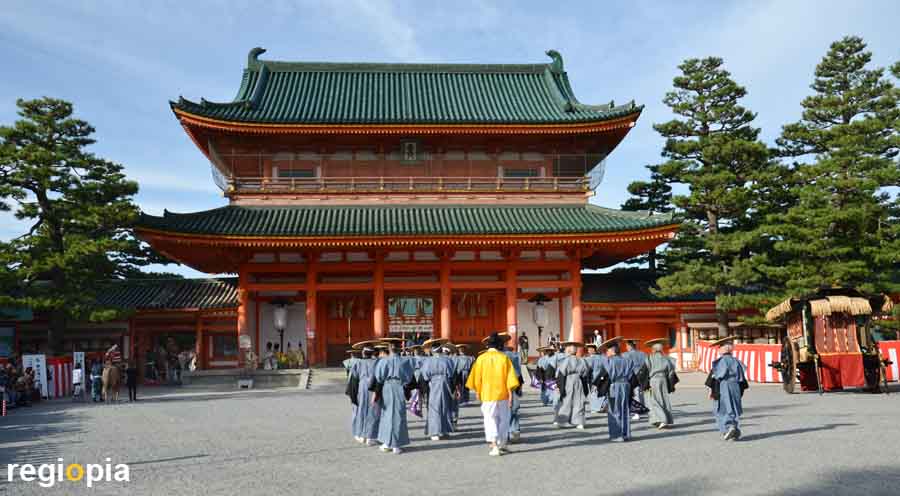
Heian Shrine
The Heian Shrine was opened in 1895, that year Kyoto turned 1,100 years old. Back then, Kyoto was the capital of Japan and was called Heian-kyo. So the Shinto Shrine was built to celebrate the founding of Kyoto. On October 22nd, the Jidai-Matsuri, a parade with historic costumes ends at this temple.
There is a red tori about 300 m south of Heian-jingu. The 24 m high tori is the second largest in Japan and made of concrete. In the photo you can see the Otemmon gate, behind which a large square opens, which is completely enclosed by buildings. To the north is the main hall, Daigoku-den, which is flanked by two corner pavilions.
The garden of the Heian Shrine is also well worth seeing, especially the covered wooden bridge Taihei-kaku from which one has a wonderful view of the large lake. The Shin-en "Garden of the Gods" was laid out by Ogawa Jihei. The entrance is a bit hidden, west of the main hall.
Okazaki Nishitennocho, Sakyo Ward
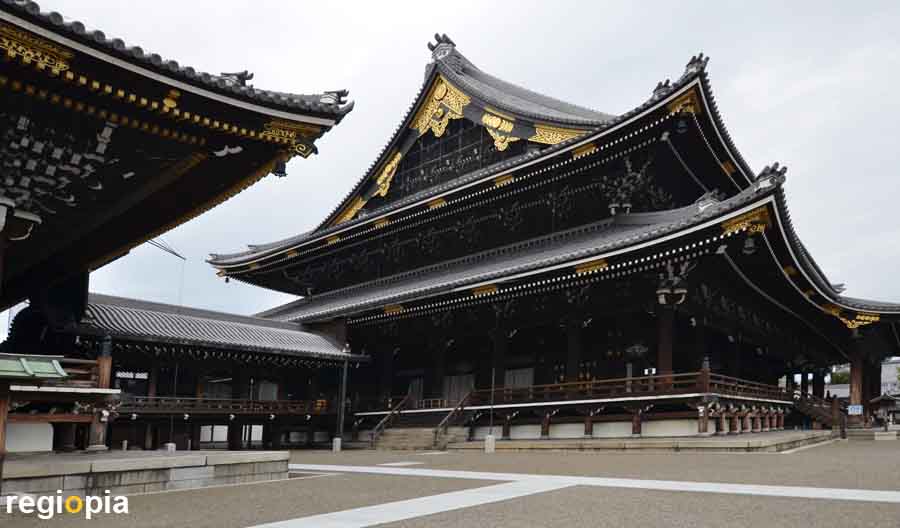
Higashi Honganji
Ishiyama Honganji Temple was originally located on the grounds of Osaka Castle. Emperor Hideyoshi moved the temple to Kyoto and gave the Buddhist monks a large piece of land in the south of the capital. The new emperor Ieyasu Tokugawa divides the temple into a western Nishi Honganji and an eastern Higashi Honganji. Both temples belong to the same Buddhist school, the Jodo-Shinshu "The True Teaching of the Pure Land". The main temple is the Nishi Honganji, which is very similar to the Higashi Honganji.
Higashi Honganji is the larger of the two temples. The Goei-do Mon entrance gate, built in 1911, impresses visitors with its size and elegance. When you have left the gate behind you, you stand in a large square with two huge halls made of dark wood. The huge Miei-do hall (photo) was destroyed several times by fire and rebuilt in 1895.
Both temples are around 500 m apart, north of the central station. The Shosei-en Garden, which is located about 300 m east of the Higashi Honganji, also belongs to the Honganji Temple. It was created by the famous garden designer Kobori Masakazu, better known as Enshu.
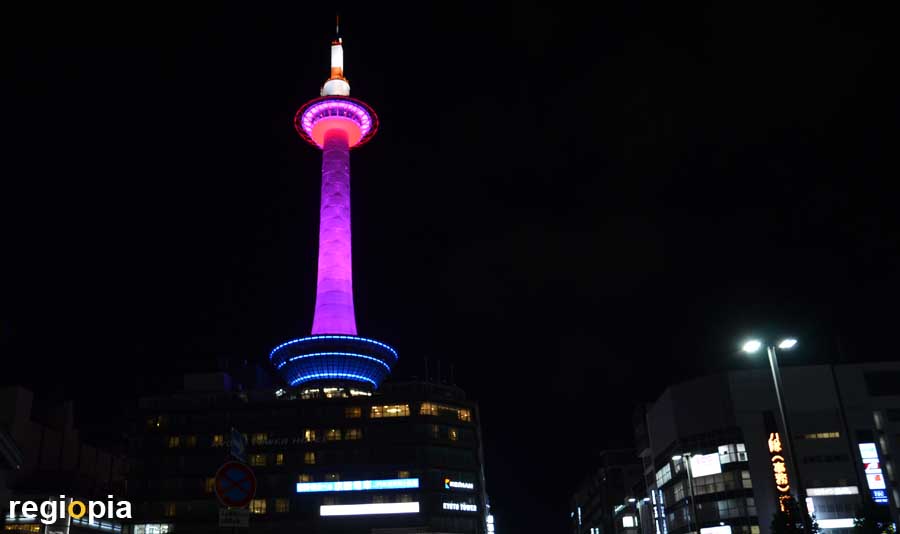
Kyoto-Tower
The Kyoto Tower is located opposite the main train station. The television tower was set in 1964 on a nine-story building. At 100 m altitude there is the observation deck from which one has a spectacular view over the city and its green slopes.
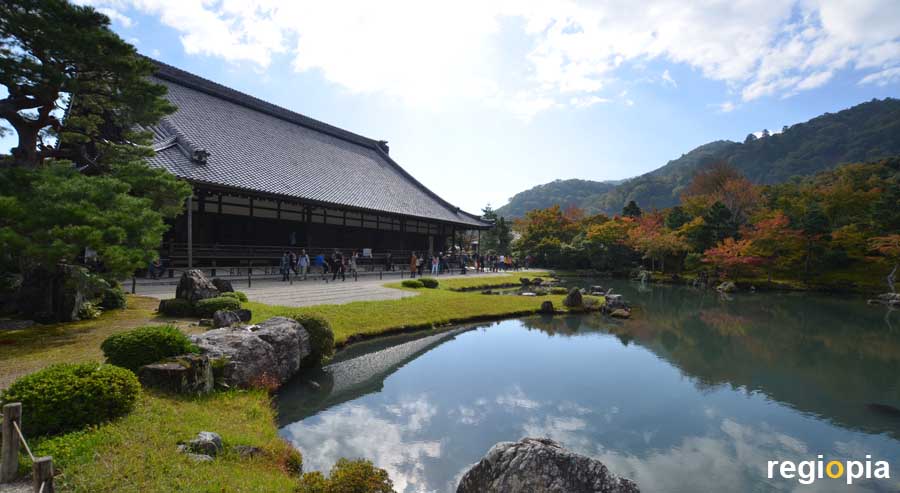
Tenryu-ji
The Tenryu-ji is the most famous sight in Arashiyama in the Ukyo district. The district is located in the north-west of Kyoto and is a popular destination for the city dwellers who flood Arashiyama on weekends. Like many other Buddhist temples in Kyoto, the Tenryu-ji was previously an imperial residence. It was the villa of Tenno Kameyama who died in 1305. To appease his mind, the complex became a Zen Buddhist temple of the Rinzai School in 1339. In fact, the first Zen temple in Japan, the Danrin-ji, stood on this plot. This temple was founded by the Empress Tachibana no Kachiko, who had a nunnery built here around 840. The Danrin-ji burned down in 928 and the property, with smaller buildings, was used as a country residence by several emperors.
Tenryu-ji Temple is located at the foot of Mount Kameyama. The pond lies between the forested mountain slope and the main hall (Hondo). This makes this wonderfully designed lake the center of the complex. The garden was designed by none other than the famous Zen master Muso Soseki, the founder of the Japanese tea ceremony. Muso Soseki was the first abbot of Tenryu-ji and the garden planning of the emperor was already implemented according to his concept. Shogun Ashikaga Takauji sent two merchant ships to China to fund the Tenryu-ji. The temple was made possible with the proceeds from this trade. The Tenryu-ji was completed in 1345.
The great fire of 1864 destroyed almost all of the temple's buildings, only the Zendo Hall remained. Most of the buildings were rebuilt between 1900 and 1934. After the Meiji restoration, the Tenryu-ji lost most of its area.
The Tenryu-ji is known for its beautiful garden. The most famous sight is the main hall Hojo where the abbot of Tenryu-ji lived. From here you have the most beautiful view of the Zen garden. Also worth seeing is the painting of the dragon by Kayama Matazo on a partition of the hojo. Kayama Matazo also painted the large ceiling painting of the "cloud dragon" in the Hatto (Dharma Hall). For this you have to buy an extra ticket. The Hatto is in front of the entrance to Tenryu-ji on the left.
How to get there
The Tenryu-ji is relatively easy to find. From Arashiyama Station you come to the main road, here you go north (right) and at the next intersection (approx. 100 m) left. Then straight about 300 m and you are in front of the entrance of Tenryu-ji.
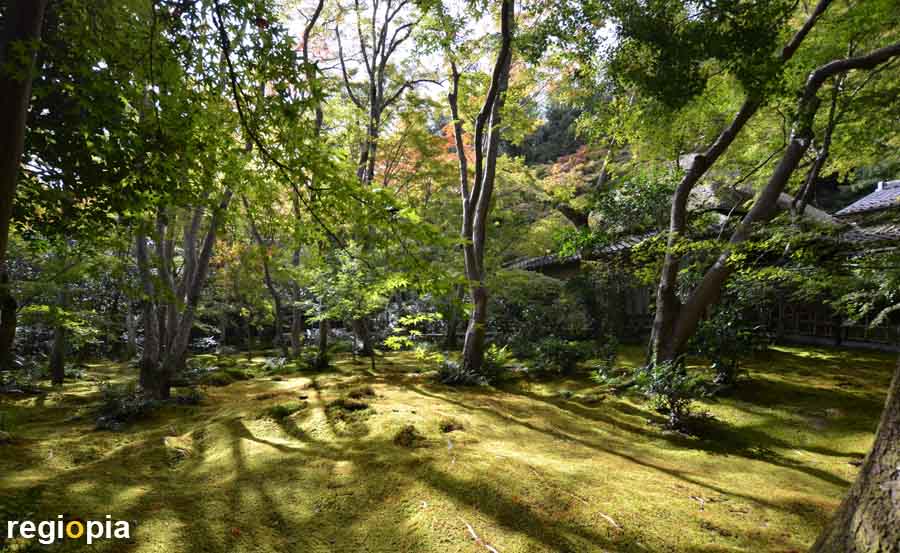
Gioji Temple
The Gioji is similar to the famous Saiho-ji, a moss temple. The small temple is somewhat hidden in the forest, in the mountains north of Arashiyama. If you walk from the bamboo forest to the Nenbutsu Temple, the Gioji is almost on the way. The Gioji is known in Japan because it appears in the Heike Monogatari. A samurai story about the fall of the Taira family. There are no large structures to marvel at, the attraction of the temple is the garden, the floor of which is completely covered with moss.
On the website of the temple (see link) there is a route description.
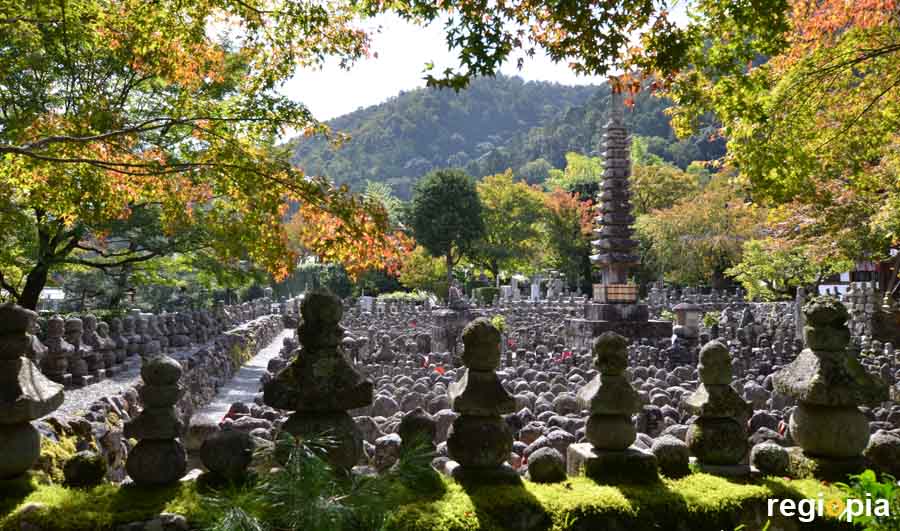
Adashino Nenbutsu-ji
The Adashino Nenbutsu-ji developed out of a cemetery. Even today, the figures erected for the dead are the defining element of the Nenbutsu Temple. The Adashino Nenbutsu-ji was created around the year 800 when Kyoto became the capital of Japan and the dead were buried in the forest. The temple is very idyllic in the hills, north of Arashiyama.
Sagatoriimoto Adashinocho, Ukyo Ward
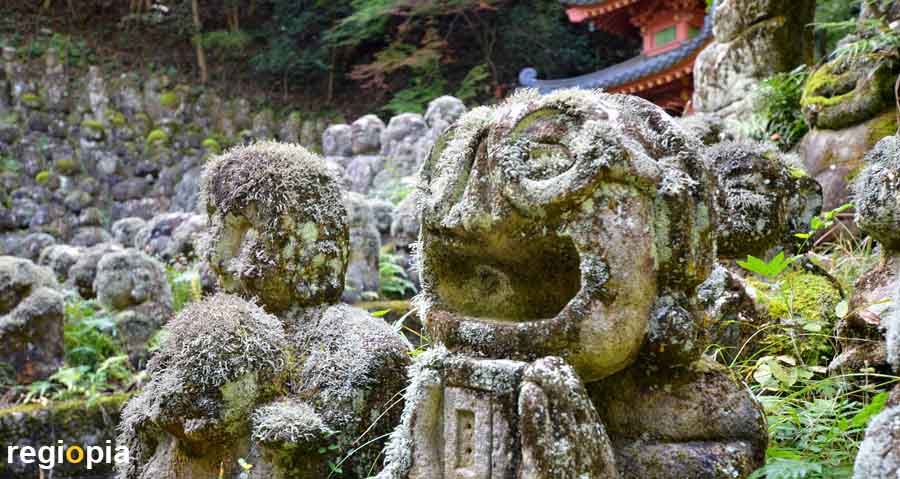
Otagi Nenbutsu-ji
If you follow the path from Adashino Nenbutsu-ji further up, you come to Otagi Nenbutsu-ji. The temple is on a slope in the forest. The entrance is still on the road. From here you climb stairs and come to a terrace on which the temple is located. Around the temple you can see hundreds of weathered stone heads which are partly covered with moss. The figures called Rakan are Buddhist figures in which their weaknesses are emphasized. This makes the figures look a bit strange.
2-5 Sagatoriimoto Fukatanicho, Ukyo Ward
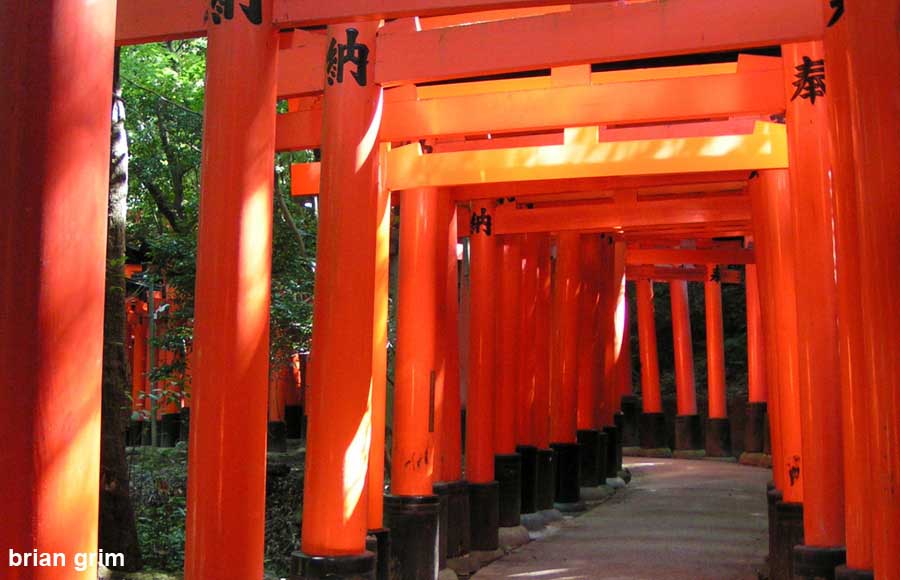
Fushimi Inari Taisha
The Fushimi Inari Taisha is one of the oldest Shinto shrines in Kyoto and the Shinto shrine with the most visitors in Japan. The Inari Temple is famous for the corridors with countless orange torii winding up the mountain. At the top of the mountain there are several temples. Protector god of the Shinto sanctuary is the fox, in Japanese "Kitsune". The fox stands for "Inari", the god of agriculture. At the altars in the Fushimi-Inari temple there are many fox representations to which the pilgrims bring offerings. The Fushimi Inari is one of the most popular photo opportunities in Kyoto.
68 Fukakusa Yabunouchicho, Fushimi-ku
Map Kyoto attractions
ads
Travel Guide Kyoto
Welcome to Kyoto
Kyoto was the capital of Japan from 794 until 1869. "Heian-kyo", as the city was called at the time, was the cultural center of the country for over 1,000 years. Countless temples and palaces were built during this time. The normal tourist who spends 3-4 days in Kyoto has to make a selection, all sights cannot be visited in the short time. The regiopia travel guide presents the most important attractions. For better orientation, the sights are classified according to their location in Kyoto. There is a link to Google Maps under each sight so that you can find the place quickly.
ads
ads


